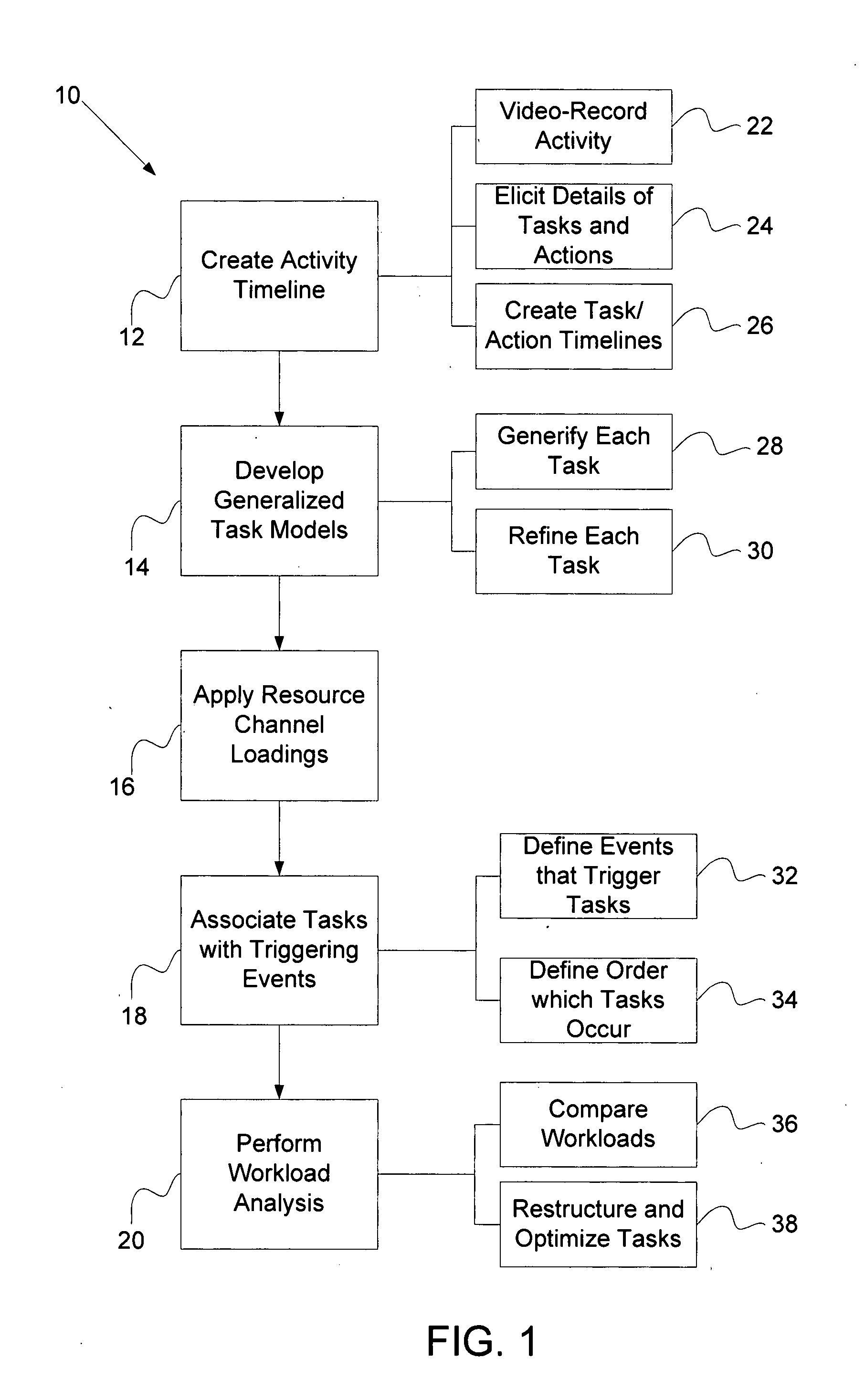Method for modeling task and workload
- Summary
- Abstract
- Description
- Claims
- Application Information
AI Technical Summary
Benefits of technology
Problems solved by technology
Method used
Image
Examples
Embodiment Construction
[0014] The present invention is a method for measuring and modeling human mental workload for various human-implemented processes. The models created by this process may be used to refine the order and extent of activities from which human-implemented processes are comprised to improve process efficiency and reduce human error. The knowledge of the order and extent of activities of which expert human-implemented processes are comprised may also be used in training non-experts The present invention accomplishes these and other objectives utilizing the method described herein.
[0015]FIG. 1 is a schematic, illustrating modeling method 10. Modeling method 10 generally includes the steps of creating an activity timeline for a human-implemented process (step 12), developing generalized task models for the activity (step 14) under varying levels of task load, applying resource channel loadings to the task models (step 16), associating tasks with triggering events (step 18), and performing ...
PUM
 Login to View More
Login to View More Abstract
Description
Claims
Application Information
 Login to View More
Login to View More - R&D
- Intellectual Property
- Life Sciences
- Materials
- Tech Scout
- Unparalleled Data Quality
- Higher Quality Content
- 60% Fewer Hallucinations
Browse by: Latest US Patents, China's latest patents, Technical Efficacy Thesaurus, Application Domain, Technology Topic, Popular Technical Reports.
© 2025 PatSnap. All rights reserved.Legal|Privacy policy|Modern Slavery Act Transparency Statement|Sitemap|About US| Contact US: help@patsnap.com



